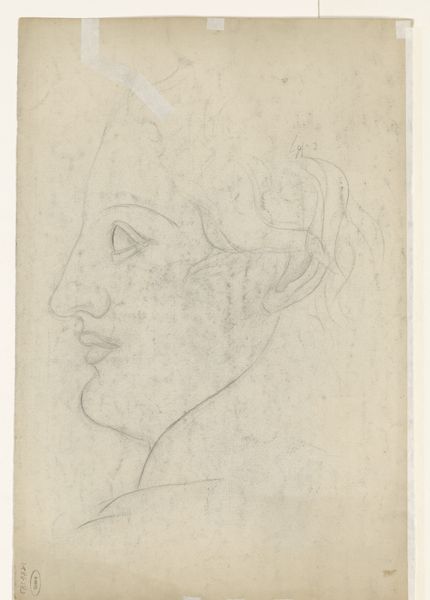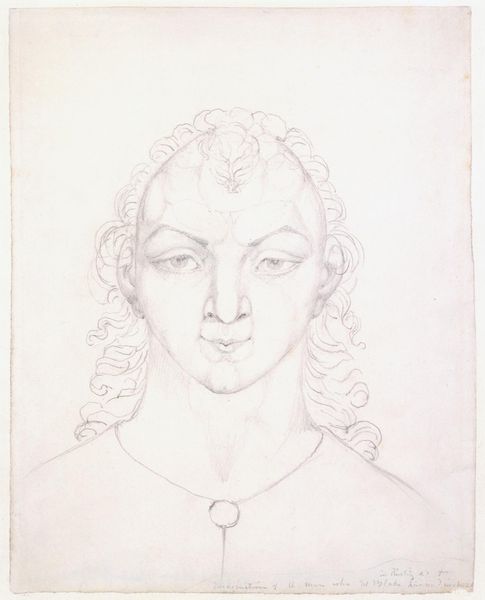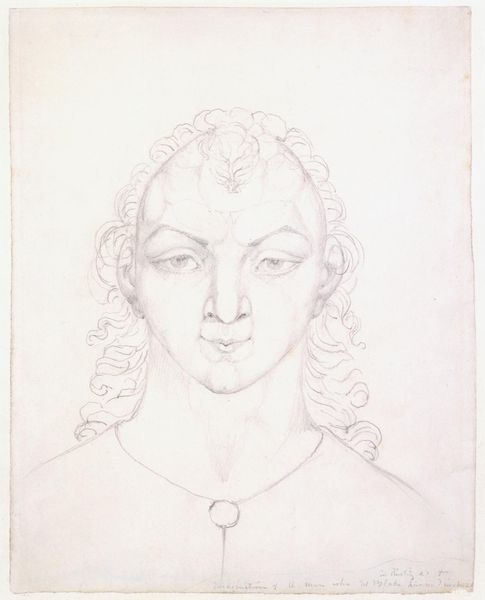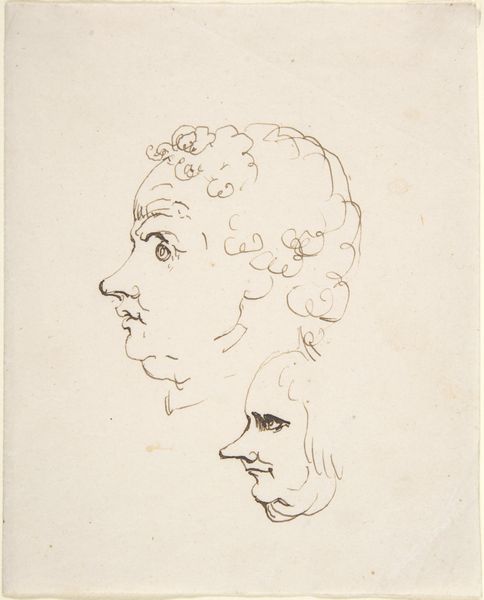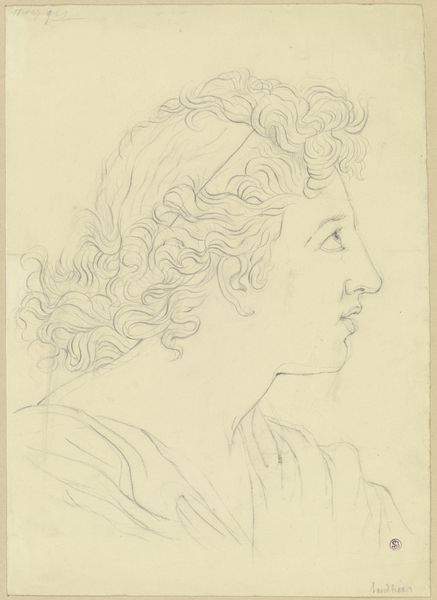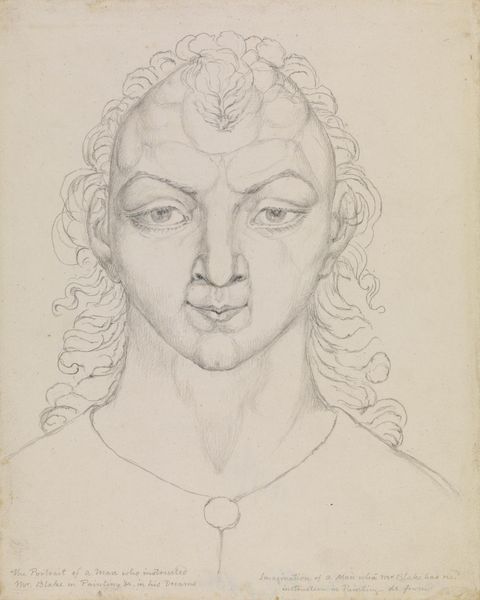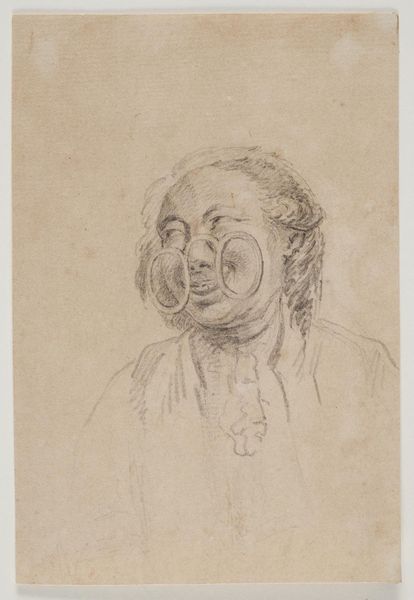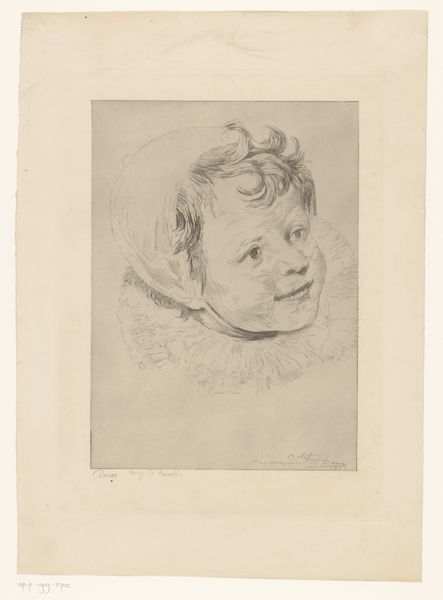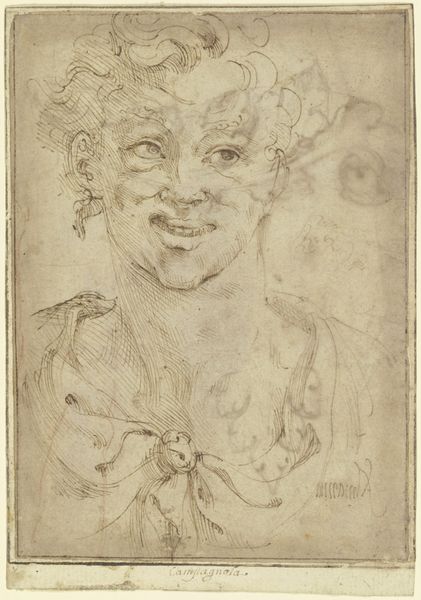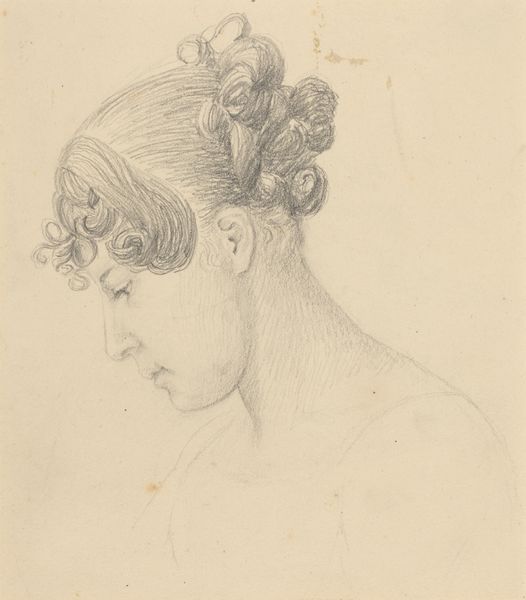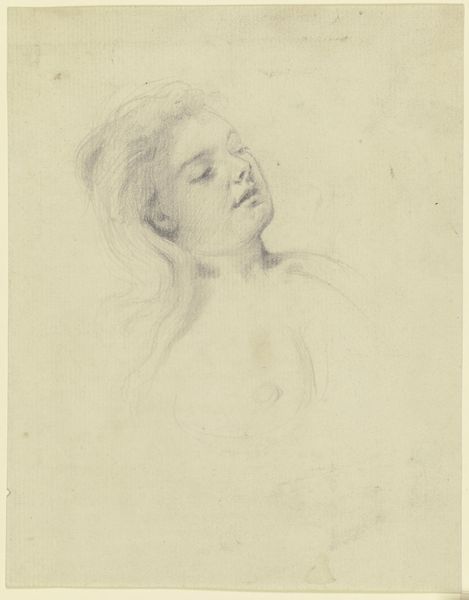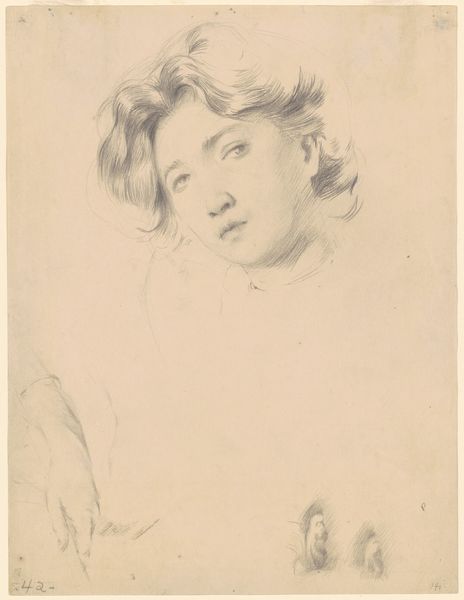
drawing, pencil
#
portrait
#
drawing
#
caricature
#
caricature
#
figuration
#
pencil drawing
#
romanticism
#
pencil
#
portrait drawing
Dimensions: overall: 25.3 x 18.8 cm (9 15/16 x 7 3/8 in.)
Copyright: National Gallery of Art: CC0 1.0
William Blake made this drawing of Wat Tyler's Daughter using graphite on paper, likely sometime around the late 18th century. Blake was a master printmaker, but here we see him working with a very different kind of material. Graphite, though seemingly simple, is derived from a complex geological process, its carbon atoms arranged in sheets that allow it to leave a mark so effortlessly. It’s a humble medium, yet capable of great subtlety, as we see in the delicate shading of the figure’s face. Consider the directness of the marks, the artist’s hand so visibly present. This is a work about immediacy, capturing a moment, or perhaps a fleeting thought. Blake was deeply engaged with the social issues of his day, and here he depicts a young woman associated with a pivotal moment in English history: the Peasants' Revolt of 1381. Looking at the artwork this way helps us understand its power beyond the mere image. The materials, the making, and the context all contribute to its meaning, blurring the lines between art, craft, and social commentary.
Comments
No comments
Be the first to comment and join the conversation on the ultimate creative platform.
